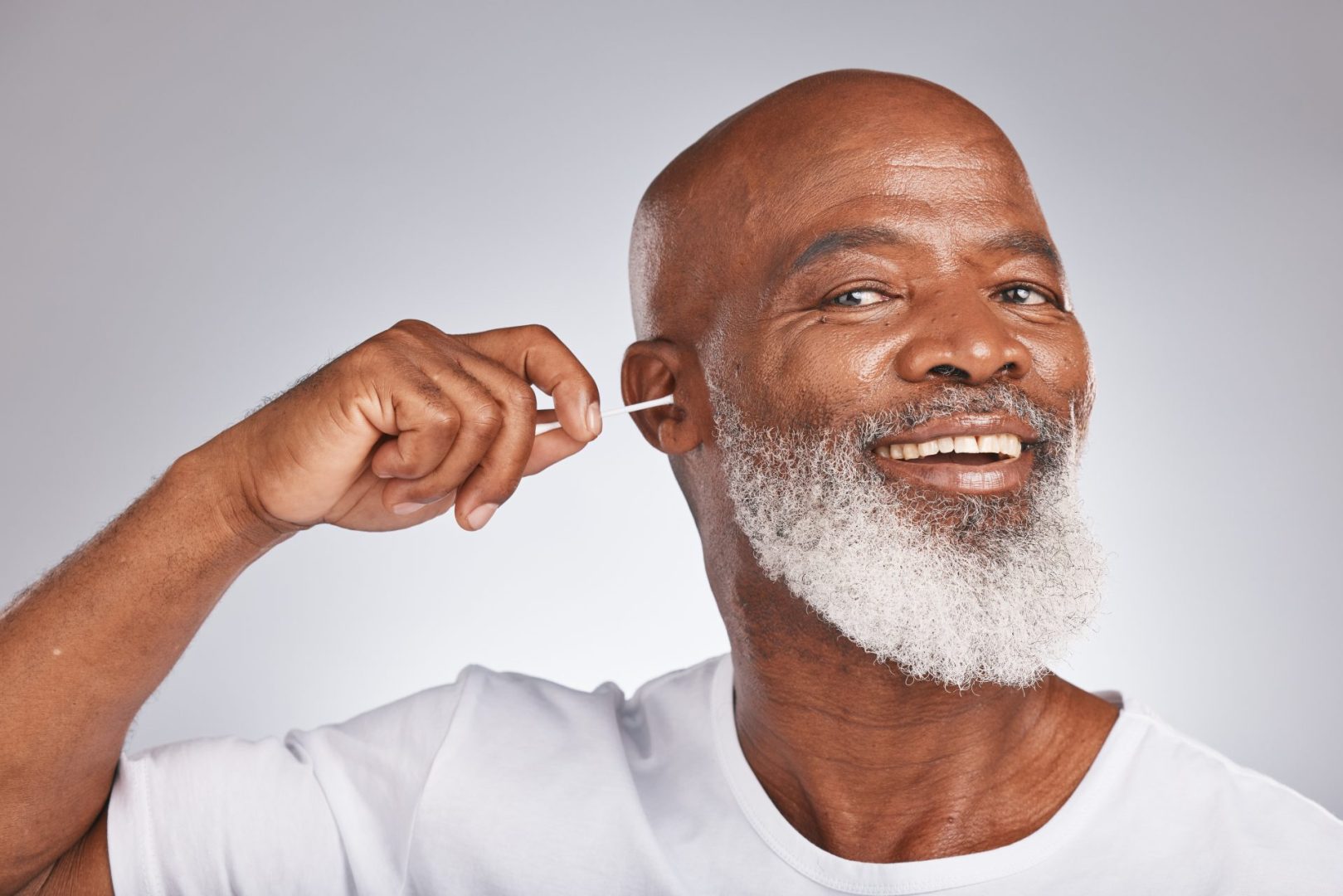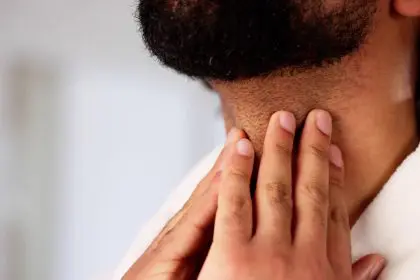That cotton swab routine might be doing more harm than good – here’s what experts want you to know about proper ear care.
The surprising truth about earwax
That yellowish substance many people work so diligently to remove from their ears isn’t the nuisance most believe it to be. Earwax, medically known as cerumen, serves as a natural protective mechanism for one of the body’s most sensitive areas. This self-produced substance combines secretions from specialized glands with sloughed skin cells to create a barrier that guards the delicate ear canal against foreign particles, bacteria, and even insects that might otherwise invade this vulnerable space.
Far from being a sign of poor hygiene, the presence of earwax indicates a healthy, functioning ear ecosystem. The ear canal contains specialized cells that continually produce this protective substance, which naturally migrates outward during everyday activities like talking, chewing, and yawning. This migration process carries captured debris and potential pathogens away from the sensitive eardrum, effectively serving as the ear’s self-cleaning mechanism.
The composition of earwax varies between individuals based on genetic factors. Some people produce drier, flakier wax, while others generate moister, stickier varieties. This variation influences how easily the wax naturally exits the ear and may partially explain why some people experience more wax buildup than others. Neither type indicates a health problem – both serve the same protective function.
5 ear cleaning methods that cause more harm than good
- Cotton swab insertion
The most common ear cleaning mistake involves pushing cotton swabs (Q-tips) into the ear canal. Despite packages explicitly warning against this practice, millions continue using them to “clean” deep within their ears. This action often pushes wax deeper into the canal rather than removing it, potentially creating impactions that block sound transmission and lead to temporary hearing loss.
More alarmingly, cotton swab use inside ear canals risks perforating the eardrum – a painful injury that can cause permanent hearing damage. The thin paper stem can snap when pressed against the ear canal’s curved passage, leaving cotton fragments that become breeding grounds for infection. The proximity of the eardrum to the ear canal entrance (roughly one inch in adults) means even “careful” insertion carries substantial risk.
- Ear candling
This alternative practice involves placing a hollow, cone-shaped candle into the ear canal and lighting the opposite end. Proponents claim the resulting vacuum draws wax from the ear, but multiple scientific investigations have thoroughly debunked this theory. No vacuum forms during the procedure, and the “extracted wax” observed afterward typically consists of candle residue rather than actual earwax.
Beyond its ineffectiveness, ear candling introduces serious risks including burns to the ear, face, and hair from dripping wax or flame. The practice has been linked to eardrum perforations, ear canal blockages from candle residue, and secondary infections requiring medical intervention. The FDA has issued explicit warnings against this dangerous procedure.
- Insertion of household objects
Many people improvise ear cleaning tools from available household items including hairpins, car keys, toothpicks, paperclips, and even writing implements. These rigid, often sharp objects introduce exceptional risk of trauma to the sensitive ear canal skin and eardrum. Their non-sterile nature further elevates infection risk, potentially introducing pathogens directly into an environment ideal for bacterial growth.
The ear canal skin lies directly over bone with minimal protective padding, making it exceptionally sensitive to pressure and pain. Objects designed for entirely different purposes lack the appropriate shape, flexibility, and safety features to navigate this delicate passage. Even minor scratches to the ear canal can lead to painful external ear infections (otitis externa) requiring medical treatment.
- Over-the-counter ear drops for routine use
While medicated ear drops serve valid therapeutic purposes when prescribed by healthcare providers, using them routinely for “cleaning” creates several problems. Many commercial ear-cleaning drops contain hydrogen peroxide, which can irritate sensitive ear canal skin with frequent use. This irritation sometimes triggers a cycle of increased wax production as the body attempts to protect the aggravated tissue.
People with undiagnosed eardrum perforations face particular risk when using OTC ear drops, as these products can flow through the perforation into the middle ear space – an area that should remain sterile. This introduces both the solution and potential contaminants into a space not designed for external exposure, potentially causing significant inflammation and infection.
- Excessive cleaning frequency
Even using gentler cleaning methods, overzealous ear hygiene disrupts the ear’s natural self-cleaning process. Removing too much protective wax leaves the ear canal vulnerable to infection and irritation. The skin lining this area becomes more susceptible to drying, cracking, and ultimately infection when stripped of its natural protective coating.
This problem frequently manifests in competitive swimmers, healthcare workers, and others who clean their ears multiple times daily due to water exposure or professional concerns about appearance. The resulting cycle of irritation, increased wax production, and further cleaning attempts can lead to chronic ear canal inflammation that becomes increasingly difficult to resolve.
When earwax actually needs removal
While most people never need manual earwax removal, certain situations warrant attention. Symptoms suggesting problematic wax buildup include decreased hearing, a sensation of fullness or blockage, tinnitus (ringing/buzzing sounds), earache, or persistent itching. These indicators suggest the wax has accumulated beyond the ear’s natural clearing capacity or become impacted against the eardrum.
Individuals with certain ear anatomies face higher risk of problematic wax accumulation. Particularly narrow ear canals, excessive ear hair, or canals with sharp bends may impede the natural outward migration of wax. People who regularly use hearing aids, earbuds, or earplugs also experience more frequent wax impaction, as these devices can prevent normal wax extrusion and sometimes push existing wax deeper into the canal.
Age-related changes also influence earwax management needs. Older adults produce drier wax that doesn’t migrate as effectively, while the skin lining the ear canal produces fewer lubricating oils. These natural changes often explain why earwax problems seem more common after age 60, sometimes requiring professional removal even in people who never experienced issues when younger.
Medical conditions affecting ear anatomy or function sometimes necessitate professional wax management. People with histories of ear surgery, eardrum perforations, mastoid cavities from previous infections, or certain congenital ear malformations require specialized approaches to wax removal that account for their unique anatomy.
The 5 safest ways to clean your ears at home
- Gentle outer ear cleaning
For most people, simply washing the visible portions of the outer ear during regular showering provides sufficient cleanliness. Using a warm washcloth to clean the auricle (the external visible portion of the ear) and the entrance to the ear canal removes excess wax that has already completed its natural migration out of the deeper canal.
This approach respects the ear’s self-cleaning mechanism while addressing aesthetic concerns about visible wax. The gentle mechanical action of washing helps break down wax that has already reached the outer portion of the canal without risking damage to deeper structures.
- Mineral oil or baby oil softening
For mild wax buildup, placing a few drops of mineral oil, baby oil, or commercial earwax softening drops into the ear canal once weekly can help maintain wax consistency that facilitates natural removal. These gentle lubricants help prevent excessive drying and hardening of wax without causing irritation to sensitive canal skin.
When using this approach, warm the solution to body temperature first (test on your wrist), apply 2-3 drops while lying with the treated ear upward, and remain in that position for 3-5 minutes to allow the solution to penetrate the wax. A gentle massage of the area just outside the ear canal helps distribute the softening agent throughout the wax.
- Gentle irrigation after softening
Following oil treatment by 24-48 hours, gentle irrigation with body-temperature water often helps flush softened wax from the ear. The safest home method involves using a soft rubber bulb syringe (available at pharmacies) to direct water gently along the upper wall of the ear canal, allowing it to flow back out naturally rather than forcing it directly toward the eardrum.
This method works best when performed during or after showering, when ambient moisture has already begun softening canal contents. Always use body-temperature water, as colder or hotter temperatures can cause dizziness by stimulating the balance-regulating structures of the inner ear.
- Over-the-counter irrigation kits
For those with recurrent mild to moderate wax issues, pharmacy-available irrigation kits provide consistent water pressure and appropriate tip design for safer home irrigation. These products typically include detailed instructions and safety features designed to minimize risks associated with more improvised methods.
When using such kits, maintaining proper temperature control remains essential, as does following directional guidelines that emphasize irrigating along the canal wall rather than directly toward the eardrum. People with histories of ear surgery, perforations, diabetes, or immune compromise should avoid this method without medical approval.
- Prevention through environmental modifications
For those prone to wax impaction, environmental and behavioral approaches often prove more effective than frequent cleaning attempts. Maintaining appropriate humidity levels prevents excessive wax drying, while avoiding unnecessary insertion of objects (including earbuds and hearing aids) when not required helps maintain natural wax migration.
Some individuals benefit from scheduled professional cleaning every 6-12 months rather than attempting home management. This preventative approach, while requiring professional visits, often proves less problematic than dealing with impactions or complications from improper self-cleaning attempts.
When to seek professional care
Certain symptoms indicate the need for prompt medical evaluation rather than home treatment. Pain – particularly severe, sudden, or accompanied by fever – suggests possible infection rather than simple wax accumulation. Similarly, any drainage from the ear, especially if clear, bloody, or foul-smelling, requires immediate medical assessment.
Sudden hearing loss, severe dizziness, or significant tinnitus following cleaning attempts warrants emergency evaluation, as these symptoms may indicate eardrum perforation or damage to middle or inner ear structures. Such injuries sometimes require surgical intervention and risk permanent hearing impairment if not promptly addressed.
People with certain medical histories should avoid home ear cleaning entirely. Those with known eardrum perforations, previous ear surgeries including tube placement, diabetes (which increases infection risk), or immune system disorders face higher risks from home cleaning attempts and benefit from professional management instead.
Children require special consideration regarding ear cleaning. Their narrower ear canals and still-developing immune systems create both increased technical difficulty and higher complication risks. Parents should focus on cleaning only the visible outer ear and consult pediatric providers regarding any concerns about hearing or ear discomfort rather than attempting deeper cleaning.
Professional ear cleaning methods
When professional intervention becomes necessary, several approaches offer safe, effective wax removal. Microscopic visualization during removal represents the gold standard for safety. Ear specialists use binocular microscopes providing magnified, three-dimensional views of the ear canal, allowing precise instrument manipulation with minimal risk to delicate structures.
Micro-suction technology offers a gentle removal option particularly suitable for impacted wax. This approach uses thin suction cannulas to carefully extract wax fragments without pushing against sensitive ear canal walls or the eardrum. The lack of water use makes this method particularly appropriate for people with known or suspected eardrum perforations.
Specialized irrigation systems with controlled pressure and temperature settings provide enhanced safety compared to home methods. These professional systems deliver precisely controlled water streams that effectively dislodge wax while minimizing trauma risk. The professional setting also enables immediate response to any unexpected findings or complications.
Manual removal using specialized instruments provides another option, particularly for very hard impactions or unusual ear anatomies. Providers use slender curettes, hooks, or forceps designed specifically for ear canal navigation to gently extract wax under direct visualization.
Maintaining ear health beyond cleaning
Beyond cleaning considerations, several practices support overall ear health. Noise protection represents a critical but often overlooked aspect of ear care. Exposure to loud sounds – whether brief but intense or moderate but prolonged – damages the delicate hair cells of the inner ear responsible for transmitting sound information to the brain. Once damaged, these cells never regenerate, resulting in permanent hearing loss.
Using appropriate hearing protection during exposure to lawn equipment, power tools, concerts, sporting events, and other noisy environments prevents this cumulative damage. Many options exist, from simple foam inserts to custom-molded protectors designed for specific activities like music or swimming.
Prompt treatment of outer ear infections helps prevent chronic problems. Early signs include itching, redness, or pain, particularly after water exposure. Seeking treatment before symptoms become severe helps prevent the development of resistant infections that prove more difficult to eradicate.
Recognizing the connection between allergies and ear problems enables better management of both conditions. Allergic inflammation often affects the passages connecting the throat and middle ear, leading to fluid accumulation, pressure changes, and increased infection risk. Proper allergy management frequently improves associated ear symptoms.
Regular hearing assessments provide early detection of changes that might otherwise go unnoticed. Most people benefit from baseline hearing evaluation in early adulthood followed by periodic reassessment, with frequency increasing after age 50 when age-related changes typically accelerate.
The ear cleaning takeaway
The ears represent a remarkable self-regulating system that, for most people, requires minimal intervention to maintain proper function. Understanding the protective role of earwax helps contextualize its presence as beneficial rather than problematic in most circumstances. This perspective shift often reduces unnecessary cleaning attempts that introduce more problems than they solve.
When intervention becomes necessary due to symptoms or specific risk factors, selecting the gentlest effective approach minimizes potential complications. For most individuals, this means focusing cleaning efforts on the visible outer ear while allowing natural processes to manage the deeper ear canal. Those requiring more involved management benefit from professional guidance tailored to their specific ear anatomy and health history.
The cultural preoccupation with ear cleaning, particularly using cotton swabs, represents a practice at odds with current understanding of ear physiology. By aligning ear care practices with actual ear health needs rather than misconceptions about cleanliness, most people can maintain optimal ear function with minimal intervention and risk.
Ultimately, the healthiest approach to ear cleaning involves respecting the ear’s sophisticated self-maintenance systems, limiting intervention to situations where natural processes prove insufficient, and seeking appropriate professional care when concerning symptoms develop. This balanced strategy supports both hearing preservation and overall ear health throughout life.


















